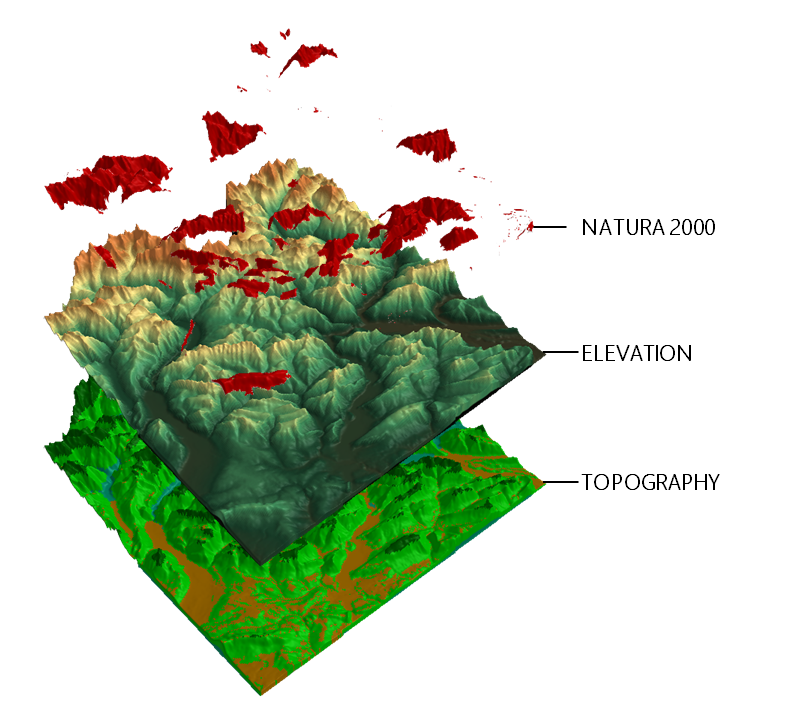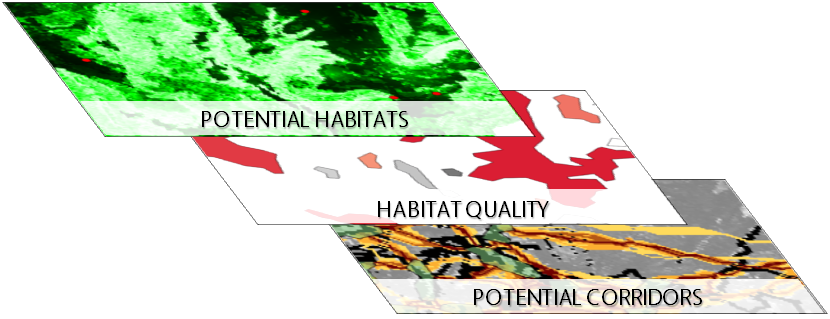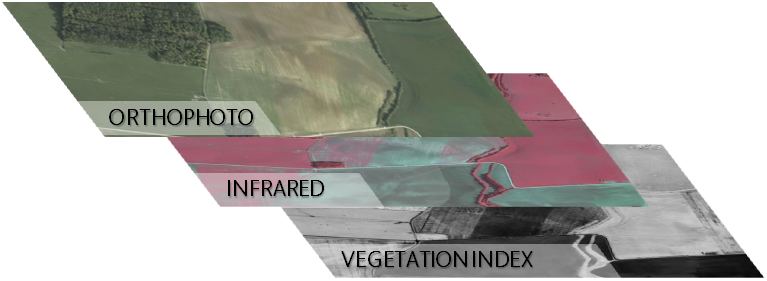The first step in every environmental survey is the fauna and flora data inventory. A large amount of data collection methods are available but only the most suitable will be used to achieve all kind of survey according to each site particularities.
Fauna and flora
- Forested area- Mountain and alpine zones
- Wetland and riparian forests
Habitat
- Forest type classification
- Vegetation community
- Habitats classification
Field data must be then analysed to understand interaction in every ecosystem. Spatial analysis is a possible tool for decision making and biodiversity conservation.
Mapping
- Fauna and flora location
- Spatial analyses on GIS software

Spatial modelling
- Habitat suitability mapping.
- Landscape connectivity analyses

Statistics and image analyses
- Multivariate statistics
- Aerial and spatial images analyses

Natural habitat conservation and management
- Habitat quality assessment
- Ecosystems restoration
Human activities must be integrated into the environment. A way to achieve this goal is to share and show what can be done in term of conservation and protection of natural habitats.
Writing
- Technical guides
- Scientific articles
Design
- Photography
- Poster, exhibition, flyer...
Presentations
- For scientists: seminar, training
- For stakeholder: working groups, presentation
- To everyone: animation and mountain leading
At the office
PC designed for spatial and images analyses and modelling
Software: GIS, modelling tools, programming languages
On the field
Bat detector: Microphone Ultramic 250kHz and SoundChaser software
Digital single-lens reflex camera and numerical compact camera
GPS and other field work equipments



































